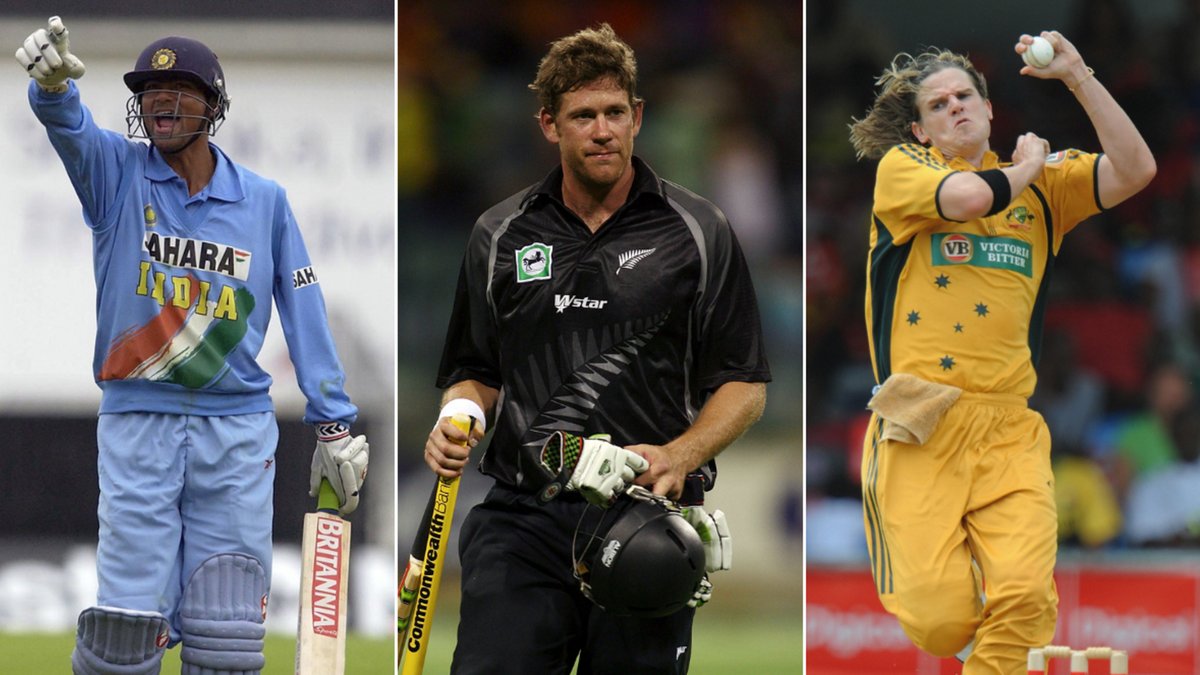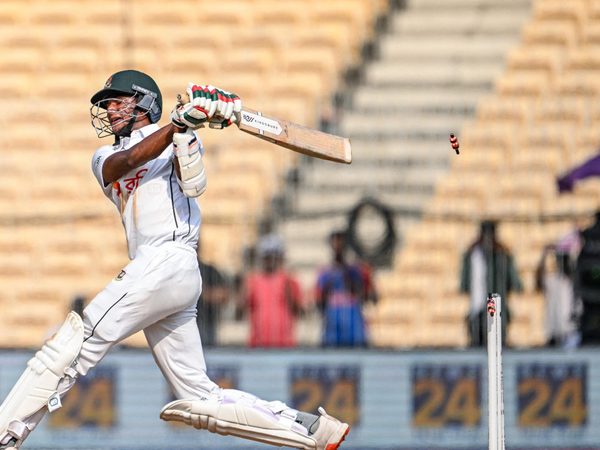
They say one-day cricket is dying a slow death. Two decades ago, it was an entirely different story.
The ODI format arguably lived through its glory days in the late Nineties and early Noughties, when the game went commercial at an unprecedented level. The changing geopolitical economic landscape exposed cricket to a much larger audience, specifically in Asia. This was accompanied by innovation, from Hawk-Eye to Super Sub to revised fielding restrictions. Some changes stuck, while others were forgotten quickly. When Australia breached the 400-run barrier in 2005/06 and South Africa chased it down the very same day, we shuddered at the thought of one-day cricket’s yet-undiscovered possibilities.
Then came T20, quickly carving their own audience while also eating into some of its elder brother’s share. Fifty-over cricket was not the most popular format anymore, but it still prevailed.
Just like the preceding decade, the 2000s were replete with fascinating figures of the one-day circuit: some still bore the Nineties style, while others were more contemporary, offering a sneak peek into the future. This XI is a tribute to those very-Noughties souls – it is not the greatest team of that decade – but a collection of players who truly captured the vibe of the 2000s, a time like no other.
Boeta Dippenaar
Now a helicopter pilot, Hendrik Human Dippenaar played over a hundred ODIs in an oversized tee and a left forearm band and wielding a Gunn & Moore. He batted everywhere from No.1 to 9, reminding us of a time when batting-order flexibility was tried to extremes. Opening seemed his best bet, for it allowed him the time to settle in (he hit four hundreds at the top). He partnered Gary Kirsten, Herschelle Gibbs and Graeme Smith at different points. Cautious and calculated, his strike rate as opener was 70, still somewhat acceptable at that time.
Imran Nazir
What is a Noughties XI without a teenage sensation? Nazir was seventeen (an early debut he later rued) when he first wore the Pakistan kit, at a time when their batting went through monumental changes. Even for a team that already had Shahid Afridi, Nazir came in as a breath of fresh air, an attacking, confident strokemaker ready to puncture the off side. Salman Butt, Yasir Hameed, Imran Farhat and Kamran Akmal all opened later in the decade, but Nazir’s youthful exuberance had something of a new-age bend to it. Inconsistency was his bane, but Nazir rose to become a T20 batting star. He was also a fantastic fielder, a rarity in the Pakistan lineup of that time.
Ramnaresh Sarwan
The fresh face of a rapidly-changing West Indies side, Sarwan entered a team holding on to remnants of a glorious past while looking at an uncertain future. Right out of the Under-19s, he got early spotlight in his Test career (the 418 chase, the McGrath sledge). And by the 2003 World Cup and the 2004 Champions Trophy, Sarwan had become the anchor to an erratic lineup. For the West Indies, only Viv Richards had a higher ODI batting average, which was also higher than Sarwan’s own Test average. After Brian Lara, he even went on to captain the side, and like several West Indies stars of that time, had his share of troubles with the board.
Mohammad Kaif
Most remember Kaif for that one evening at Lord’s in 2002. That NatWest win was one of India’s most memorable, catapulting Kaif into the category of future superstars. It did not quite pan out like that, but Kaif, the first captain to win the Under-19 World Cup for India, continued to be an ODI mainstay for a few years, a hardworking grafter who could never quite turn good to great. He still was, in many ways, a true representation of India’s new-look one-day side: he ran hard between the wickets, could be trusted in a chase, and above all, was a wonderfully agile fielder, arguably one of the finest of his generation.
Russel Arnold
Substance over style. In and out of the side several times, Arnold ended up living through multiple eras of Sri Lanka cricket, even though most of those appearances were smeared across the 2000s. He batted everywhere from opening to No.8, eventually ending up being Sri Lanka’s designated grafter-finisher. Like several compatriots of that era, there was some gentle off-break to offer as well, and he was a fantastic fielder to boot. To add a little footnote to his white-ball CV, he ended up being Sri Lanka’s very first T20I cap.
Jacob Oram
Another all-rounder: there was no shortage of those in the Noughties. Stiffly tall, seamer Oram was more than gentle but less than tearaway, but the height did it for him. Add to that some nifty pace change and tasty cutters, and you had a muddy-white ball, middle-overs specialist. Furthermore, he could give the ball a cold, hard whack, often wrapping up innings alongside the Cairnses and Vettoris. At one point, he held the record for the fastest men’s ODI century by a New Zealander.
Scott Styris
Styris was the archetypal all-rounder of that time: a bit of batting, a bit of bowling, and everything else in between. His dibbly-dobbly offerings might have looked harmless at first, but few can boast of claiming Sachin Tendulkar as their maiden ODI victim (Brian Lara was his first Test scalp). A couple of years in, he had taken the best ODI figures by a New Zealander ever (6-25). Bowling was still probably his weaker suit: armed with a bat, Styris was devastatingly good on his day and one for the big occasion. He averaged 53 with the bat across three World Cups, smashing two hundreds.
Mark Boucher (wk)
For the longest time, a South Africa lineup was incomplete without Boucher. At a time when the Gilchrists, Sangakkaras and Dhonis became more fashionable, Boucher felt a bit from the old generation, when the term wicketkeeper was not forcefully appended with ‘-batsman’. In the new millennium, however, you could not be a glove poser anymore, you had to bat. Boucher invented and reinvented himself into a reliable middle-order batter, while still being neat, classy and efficient behind the stumps. No ODI wicketkeeper in the 2000s chalked more appearances, or took more catches than him. Truly a great.
Upul Chandana
Now Chandana was not all 21st century, but he was somehow more Noughties than Nineties (despite the 1996 World Cup medal at his home). At a time when Muttiah Muralitharan and Sanath Jayasuriya were the start and end of Sri Lanka’s spin attack, Chandana lent variety with his wiry frame and loopy leggies (among all Lankan spinners of the 2000s, only those two took more ODI wickets than him). In a niche pairing of skills, he was also delightfully swift on the field, diving without a care in the world and effecting direct-hits with serious accuracy.
Dilhara Fernando
Another from the Lankan brigade, Fernando – broad shoulders, menacing hair, raised eyebrows – was an inconsistently beautiful quick. When everything was going well, he could raze through sides with piercing pace and early swing (only Muralitharan and Chaminda Vaas took more wickets for Sri Lanka than him in 2000s). There were some average days too, when you would see him spraying the ball around, but somehow, he would manage to bounce back to brighter times. Just like the Sri Lanka team of that time, you could see the good, bad and ugly all on the same day.
Nathan Bracken
After Bruce (Reid) and Brendon (Julian) came Bracken, clearing up the late-Nineties backlog of quality left-arm Australian quicks. The early years were naturally difficult, trying to wriggle into a line-up overflowing with class. But when the mid-2000s hit, Bracken became the face of Australia’s new-age ODI attack. The image of Bracken in full flow is still fresh: golden mane held in place by a hairband, toothy grin, bouncy, italicised action. By 2008, he was the top-ranked ODI bowler, before a long-standing knee injury stalled him.








